 Is there anything sweeter than a beautiful movie palace? 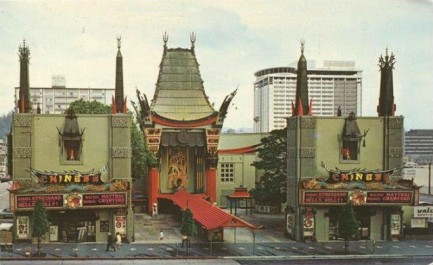
You probably recognize Grauman's Chinese Theatre, in Los Angeles. These days it's called TCL Chinese Theatre, because it's owned and operated by TCL Corporation—based in China, ironically. Since we write so often about movies we thought it appropriate to discuss the beautiful buildings in which the films were exhibited. Back in the day these were usually purpose-built structures, though some did split duty for stage productions and concerts. While many of these old palaces survive, nearly all surviving vintage cinemas in the U.S. were under threat at some point. Generally, if they hadn't been given historic protection they wouldn't be upright today.
Other times, if a city was poor, real estate costs didn't rise and old buildings stood unthreatened, usually idle. This happened often in the American midwest, where movie houses were neglected for decades before some were resurrected amid downtown revitalizations. It sometimes happens in Latin America too, although occasionally the formula fails. For example, Cartagena's majestic and oft photographed landmark Teatro Colón, located in the historic section of Colombia's most popular coastal tourist city, was torn down fewer than six months ago to make way for a Four Seasons Hotel.
Some of the cinemas below are well known treasures, while others are more unassuming places. But even those lesser known cinemas show how much thought and work was put into making moviegoing a special experience. The last photo, which shows the Butterfly Theatre in Milwaukee, exemplifies that idea. The façade is distinguished by a terra cotta butterfly sculpture adorned with light bulbs. As you might guess, many of the most beautiful large cinemas were in Los Angeles, which means that city is well represented in the collection. Enjoy.
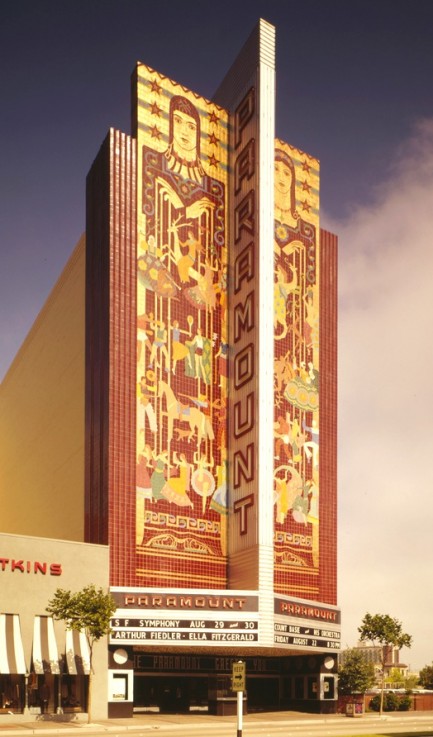 Paramount Theatre, Oakland (operational). Paramount Theatre, Oakland (operational).
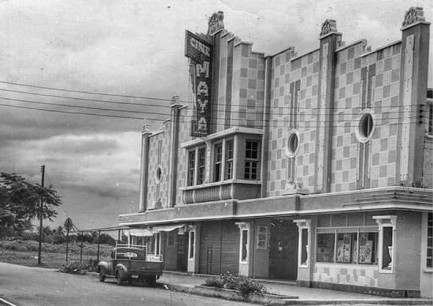 Cine Maya, Mérida (demolished). Cine Maya, Mérida (demolished).
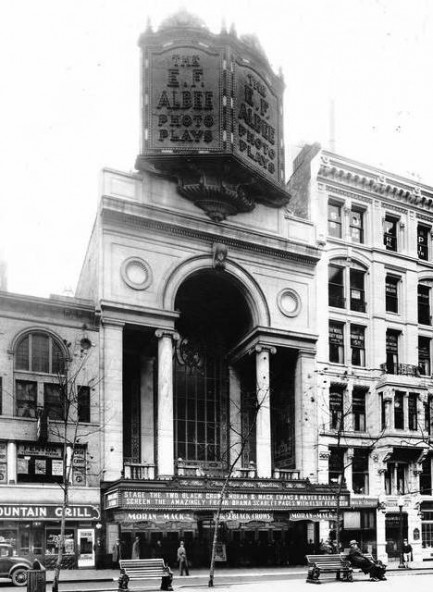 The Albee Cinema, Cincinnati (demolished) The Albee Cinema, Cincinnati (demolished)
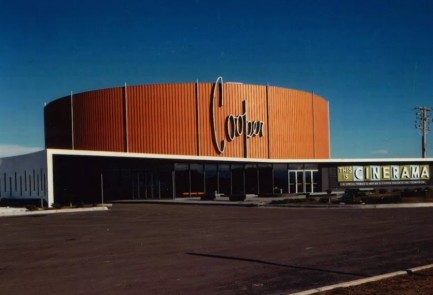 Cooper Theatre, Denver (demolished). Cooper Theatre, Denver (demolished).
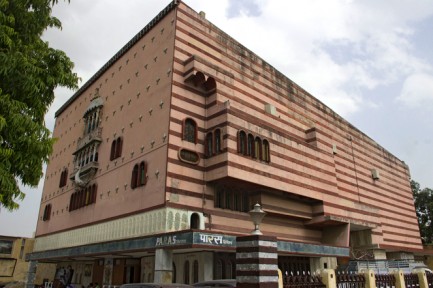 Paras Cinema, Jaipur (operational). Paras Cinema, Jaipur (operational).
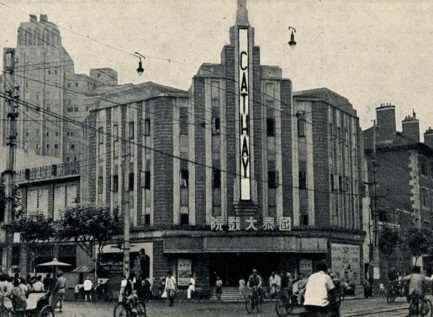 Cathay Cinema, Shanghai (operational). Cathay Cinema, Shanghai (operational).
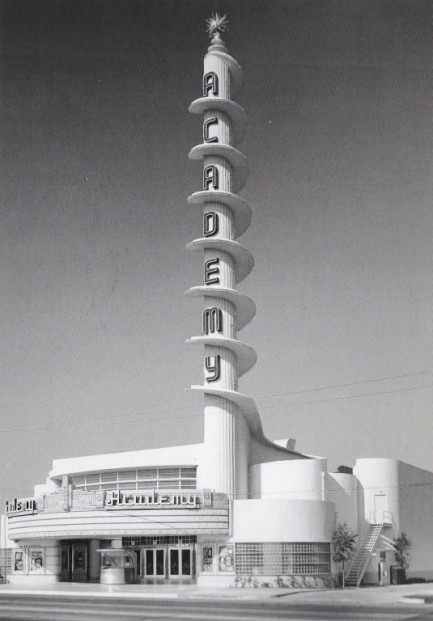 Academy Theatre, Los Angeles (operational). Academy Theatre, Los Angeles (operational).
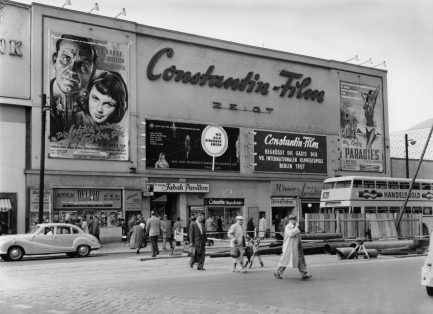 Charlottenburg Filmwerbung, Berlin (demolished). Charlottenburg Filmwerbung, Berlin (demolished).
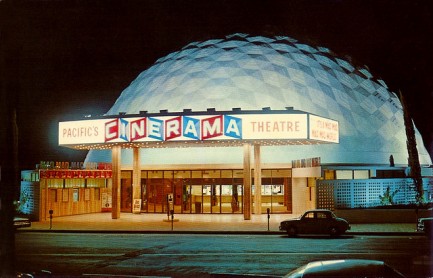 Pacific's Cinerama Theatre, Los Angeles (operational). Pacific's Cinerama Theatre, Los Angeles (operational).
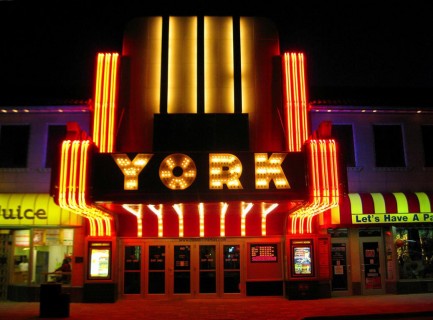 York Theatre, Elmhurst (operational). York Theatre, Elmhurst (operational).
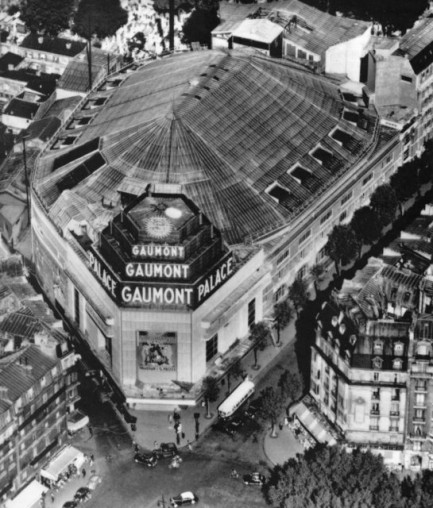 La Gaumont-Palace, Paris (demolished). La Gaumont-Palace, Paris (demolished).
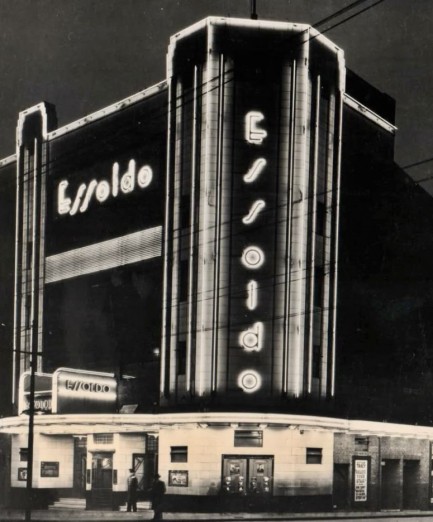 Essoldo Cinema, Newcastle (demolished). Essoldo Cinema, Newcastle (demolished).
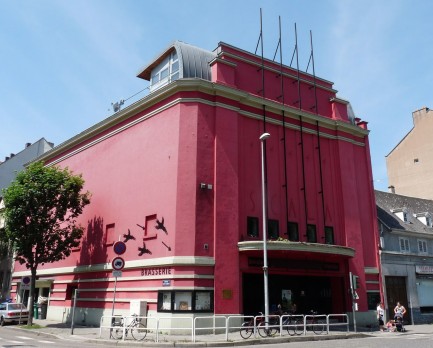 Théâtre Scala, Strasbourg (operational). Théâtre Scala, Strasbourg (operational).
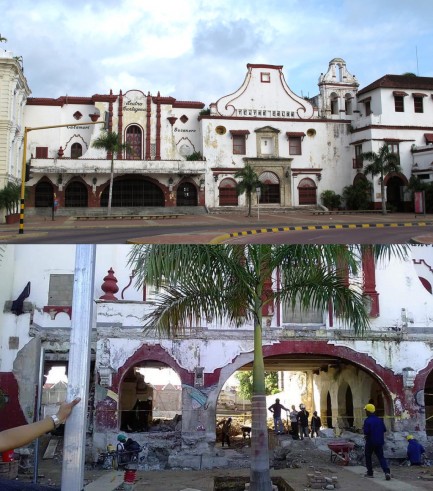 Teatro Colón, Cartagena (demolished in 2018). Teatro Colón, Cartagena (demolished in 2018).
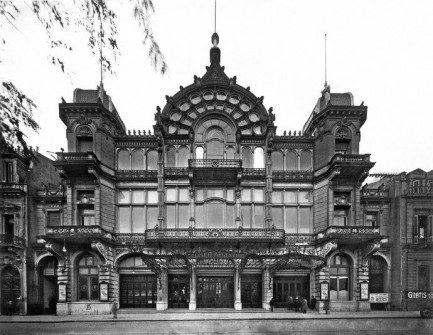 Teatro Coliseo Argentino, Buenos Aires (demolished). Teatro Coliseo Argentino, Buenos Aires (demolished).
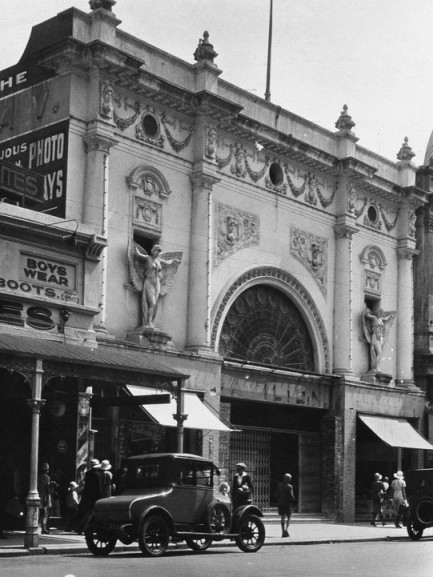 Pavilion Theater, Adelaide (demolished). Pavilion Theater, Adelaide (demolished).
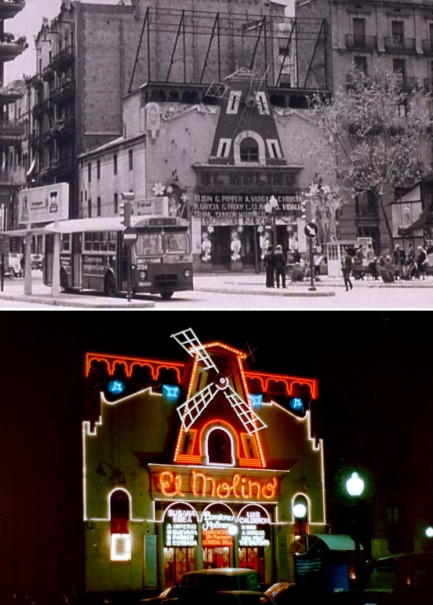 El Molino Teatro, Barcelona (operational). El Molino Teatro, Barcelona (operational).
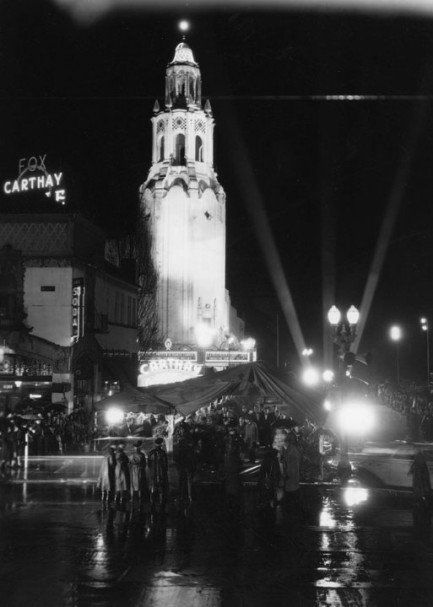 Fox Carthay Theatre, Los Angeles (demolished). Fox Carthay Theatre, Los Angeles (demolished).
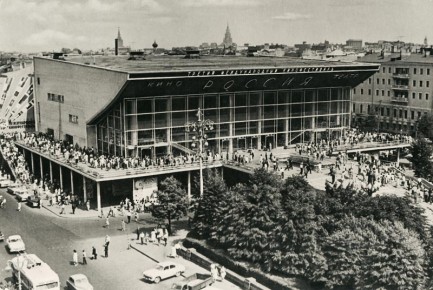 Kino Rossiya Teatr, Moscow (operational). Kino Rossiya Teatr, Moscow (operational).
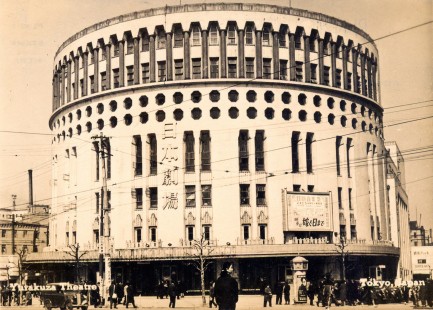 Nippon Gekijo, aka Nichigeki, Tokyo (demolished). Nippon Gekijo, aka Nichigeki, Tokyo (demolished).
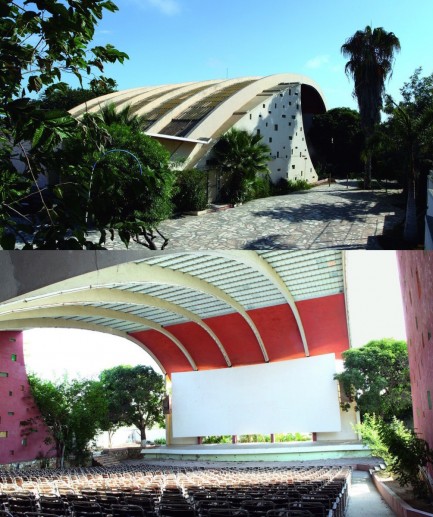 Cine Impala, Namibe (operational). Cine Impala, Namibe (operational).
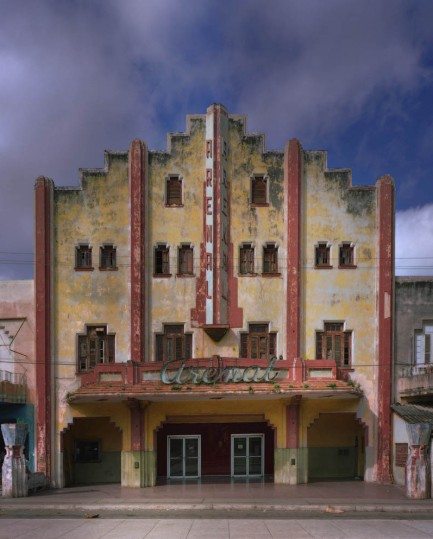 Cine Arenal, Havana (operational). Cine Arenal, Havana (operational).
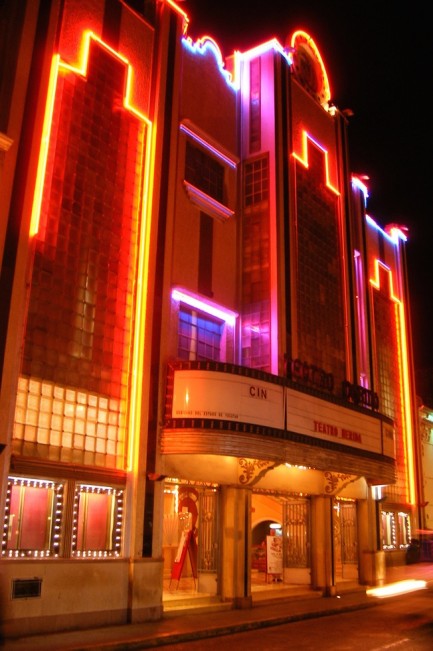 Teatro Mérida, Mérida (operational, renamed Teatro Armando Manzanero). Teatro Mérida, Mérida (operational, renamed Teatro Armando Manzanero).
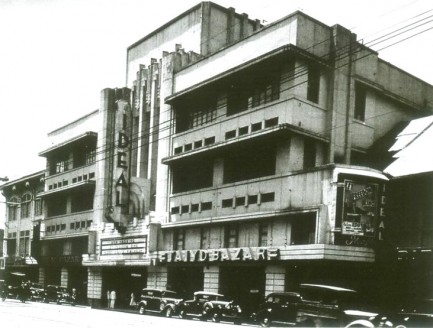 Ideal Theater, Manila (demolished). Ideal Theater, Manila (demolished).
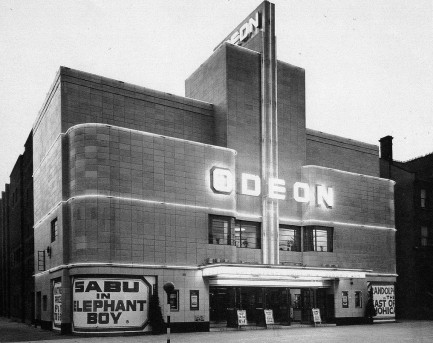 Odeon Cinema, London (semi-demolished, converted to apartments). Odeon Cinema, London (semi-demolished, converted to apartments).
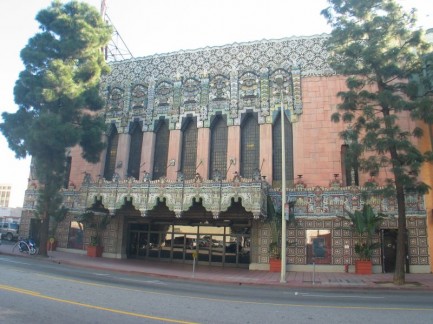 Mayan Theatre, Los Angeles (operational). Mayan Theatre, Los Angeles (operational).
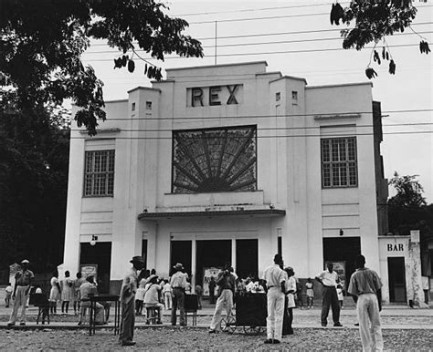 Rex Cinema, Port au Prince (being restored). Rex Cinema, Port au Prince (being restored).
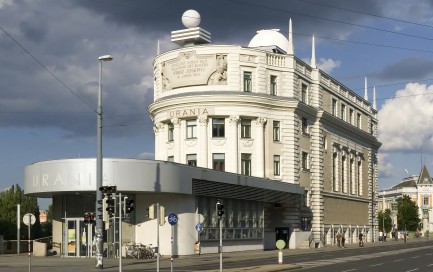 Urania Kino, Vienna (operational). Urania Kino, Vienna (operational).
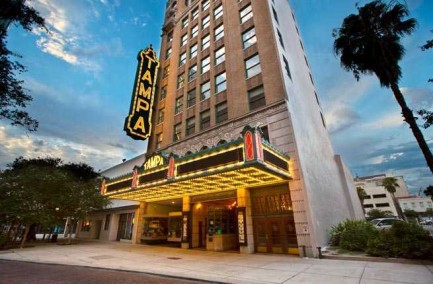 Tampa Theatre, Tampa (operational). Tampa Theatre, Tampa (operational).
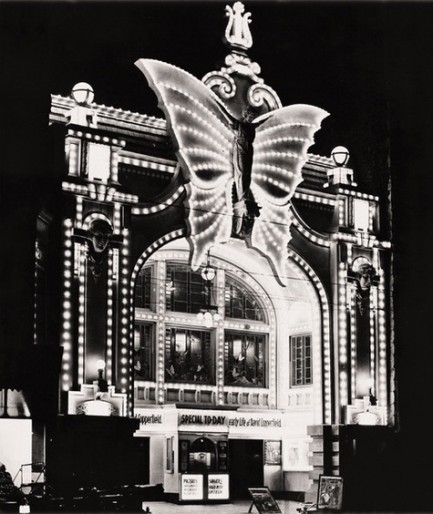 The Butterfly Theater, Milwaukee (demolished). The Butterfly Theater, Milwaukee (demolished).
 Shoot first, ask questions later. 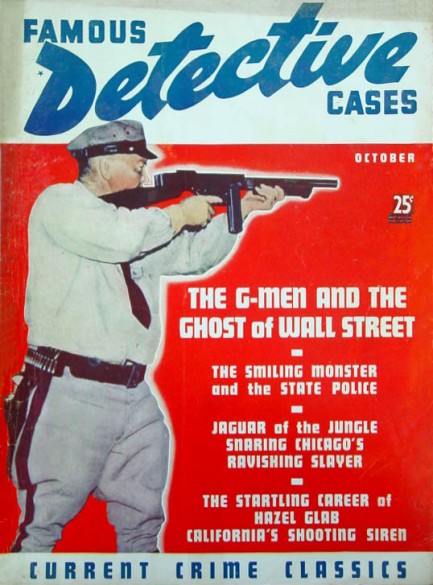
Above is a Famous Detective Cases from October 1936 with a cover featuring everyone’s worst nightmare—a smalltown cop with a big gut and a bigger gun. Among the articles is a detailed look at Hazel Glab, who was notorious for a while due to being accused of the murder of her wealthy husband John. Police initially couldn’t make a case against Glab, which of course left the press to speculate and theorize. When we were looking at some of those old articles we found several illustrations, including a smoking gun art piece from an April 1930 Milwaukee Sentinel, of which we’ve posted a portion below. There was also a photo of a detective re-enacting John Glab's last moments, with another smoking gun, and we’ve posted that too. Hazel Glab did eventually go to jail—at first it was for forging her husband’s will, but in January 1936 prosecutors indicted her for second degree murder. Glab was paroled in 1943, but she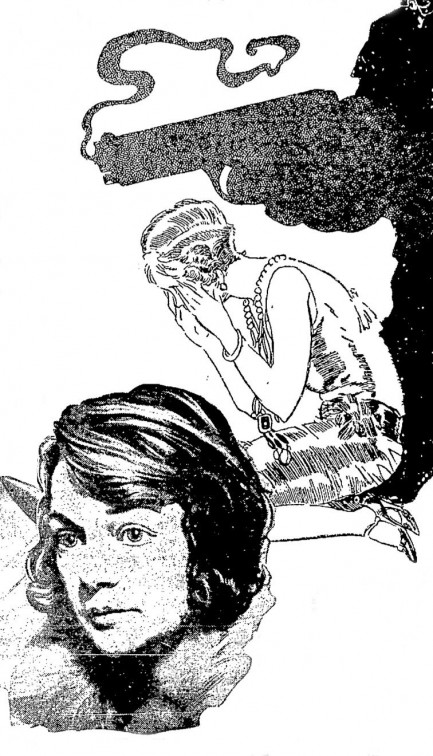 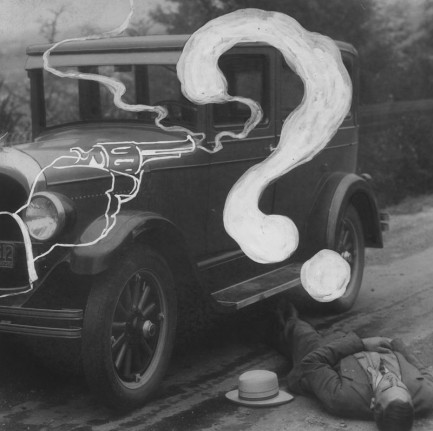 made news again in 1945 for a domestic incident, in 1958 when she was hauled into court on pandering charges, and yet again in 1965 when she was charged with making threatening phone calls. There are other stories as well—like the time she shot a man in the face for “insulting” her. Glab died in 1977, but perhaps we’ll get back to her a bit later. There’s certainly enough material. made news again in 1945 for a domestic incident, in 1958 when she was hauled into court on pandering charges, and yet again in 1965 when she was charged with making threatening phone calls. There are other stories as well—like the time she shot a man in the face for “insulting” her. Glab died in 1977, but perhaps we’ll get back to her a bit later. There’s certainly enough material.
|
 |

The headlines that mattered yesteryear.
2003—Hope Dies
Film legend Bob Hope dies of pneumonia two months after celebrating his 100th birthday. 1945—Churchill Given the Sack
In spite of admiring Winston Churchill as a great wartime leader, Britons elect
Clement Attlee the nation's new prime minister in a sweeping victory for the Labour Party over the Conservatives. 1952—Evita Peron Dies
Eva Duarte de Peron, aka Evita, wife of the president of the Argentine Republic, dies from cancer at age 33. Evita had brought the working classes into a position of political power never witnessed before, but was hated by the nation's powerful military class. She is lain to rest in Milan, Italy in a secret grave under a nun's name, but is eventually returned to Argentina for reburial beside her husband in 1974. 1943—Mussolini Calls It Quits
Italian dictator Benito Mussolini steps down as head of the armed forces and the government. It soon becomes clear that Il Duce did not relinquish power voluntarily, but was forced to resign after former Fascist colleagues turned against him. He is later installed by Germany as leader of the Italian Social Republic in the north of the country, but is killed by partisans in 1945.
|

|
|

It's easy. We have an uploader that makes it a snap. Use it to submit your art, text, header, and subhead. Your post can be funny, serious, or anything in between, as long as it's vintage pulp. You'll get a byline and experience the fleeting pride of free authorship. We'll edit your post for typos, but the rest is up to you. Click here to give us your best shot.

|
|


 Paramount Theatre, Oakland (operational).
Paramount Theatre, Oakland (operational). Cine Maya, Mérida (demolished).
Cine Maya, Mérida (demolished). The Albee Cinema, Cincinnati (demolished)
The Albee Cinema, Cincinnati (demolished) Cooper Theatre, Denver (demolished).
Cooper Theatre, Denver (demolished). Paras Cinema, Jaipur (operational).
Paras Cinema, Jaipur (operational). Cathay Cinema, Shanghai (operational).
Cathay Cinema, Shanghai (operational). Academy Theatre, Los Angeles (operational).
Academy Theatre, Los Angeles (operational). Charlottenburg Filmwerbung, Berlin (demolished).
Charlottenburg Filmwerbung, Berlin (demolished). Pacific's Cinerama Theatre, Los Angeles (operational).
Pacific's Cinerama Theatre, Los Angeles (operational). York Theatre, Elmhurst (operational).
York Theatre, Elmhurst (operational). La Gaumont-Palace, Paris (demolished).
La Gaumont-Palace, Paris (demolished). Essoldo Cinema, Newcastle (demolished).
Essoldo Cinema, Newcastle (demolished). Théâtre Scala, Strasbourg (operational).
Théâtre Scala, Strasbourg (operational). Teatro Colón, Cartagena (demolished in 2018).
Teatro Colón, Cartagena (demolished in 2018). Teatro Coliseo Argentino, Buenos Aires (demolished).
Teatro Coliseo Argentino, Buenos Aires (demolished). Pavilion Theater, Adelaide (demolished).
Pavilion Theater, Adelaide (demolished). El Molino Teatro, Barcelona (operational).
El Molino Teatro, Barcelona (operational). Fox Carthay Theatre, Los Angeles (demolished).
Fox Carthay Theatre, Los Angeles (demolished). Kino Rossiya Teatr, Moscow (operational).
Kino Rossiya Teatr, Moscow (operational). Nippon Gekijo, aka Nichigeki, Tokyo (demolished).
Nippon Gekijo, aka Nichigeki, Tokyo (demolished). Cine Impala, Namibe (operational).
Cine Impala, Namibe (operational). Cine Arenal, Havana (operational).
Cine Arenal, Havana (operational). Teatro Mérida, Mérida (operational, renamed Teatro Armando Manzanero).
Teatro Mérida, Mérida (operational, renamed Teatro Armando Manzanero). Ideal Theater, Manila (demolished).
Ideal Theater, Manila (demolished). Odeon Cinema, London (semi-demolished, converted to apartments).
Odeon Cinema, London (semi-demolished, converted to apartments). Mayan Theatre, Los Angeles (operational).
Mayan Theatre, Los Angeles (operational). Rex Cinema, Port au Prince (being restored).
Rex Cinema, Port au Prince (being restored). Urania Kino, Vienna (operational).
Urania Kino, Vienna (operational). Tampa Theatre, Tampa (operational).
Tampa Theatre, Tampa (operational). The Butterfly Theater, Milwaukee (demolished).
The Butterfly Theater, Milwaukee (demolished).


 made news again in 1945 for a domestic incident, in 1958 when she was hauled into court on pandering charges, and yet again in 1965 when she was charged with making threatening phone calls. There are other stories as well—like the time she shot a man in the face for “insulting” her. Glab died in 1977, but perhaps we’ll get back to her a bit later. There’s certainly enough material.
made news again in 1945 for a domestic incident, in 1958 when she was hauled into court on pandering charges, and yet again in 1965 when she was charged with making threatening phone calls. There are other stories as well—like the time she shot a man in the face for “insulting” her. Glab died in 1977, but perhaps we’ll get back to her a bit later. There’s certainly enough material. 



































































